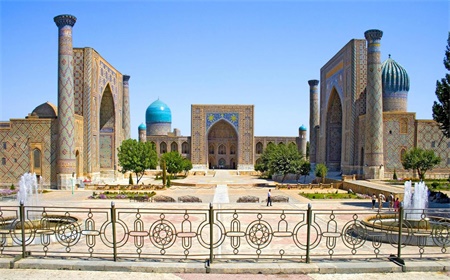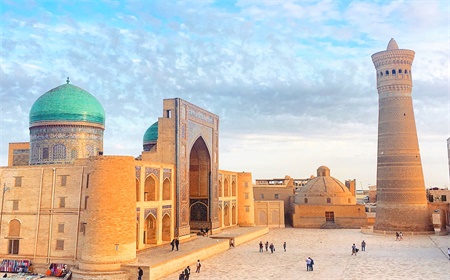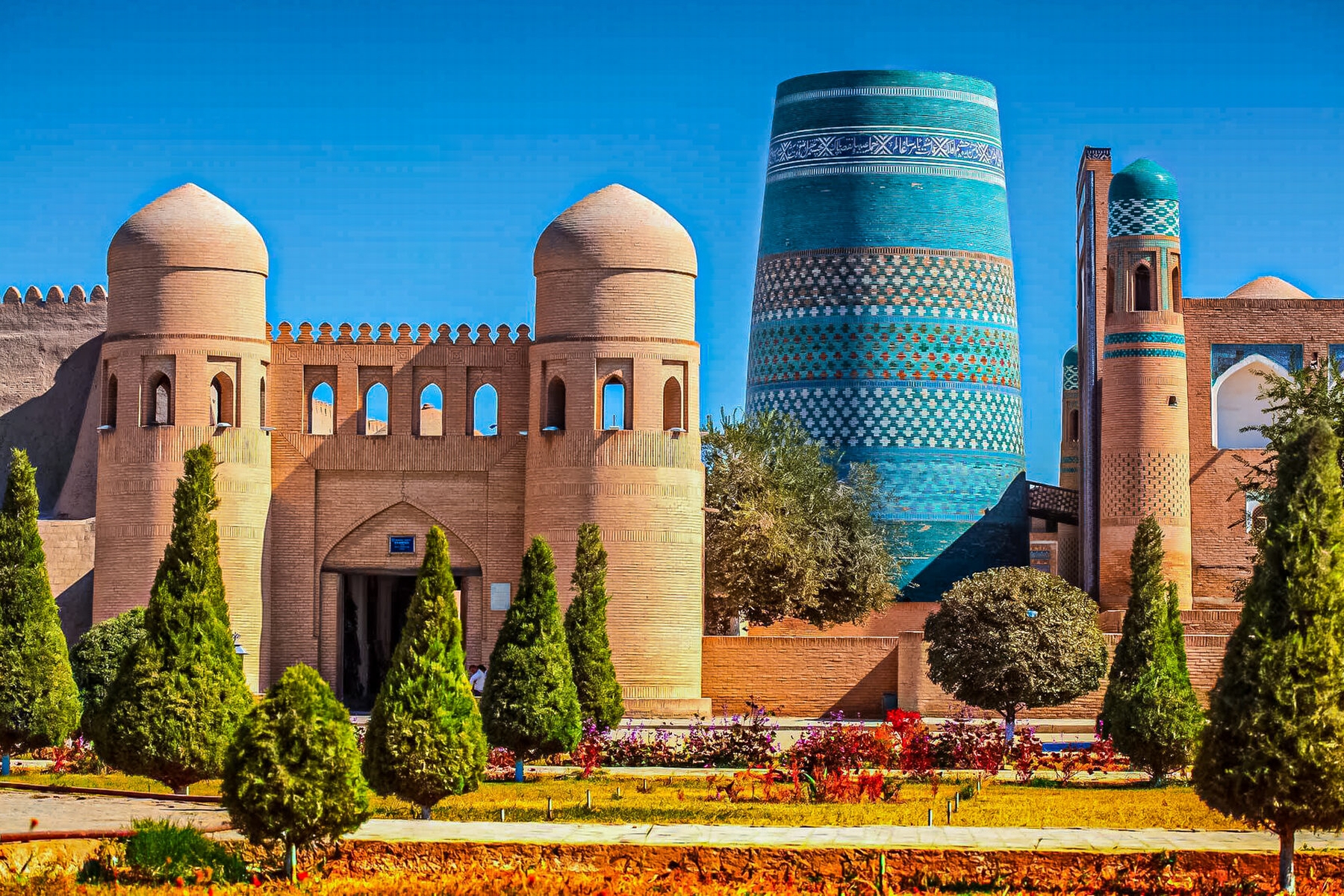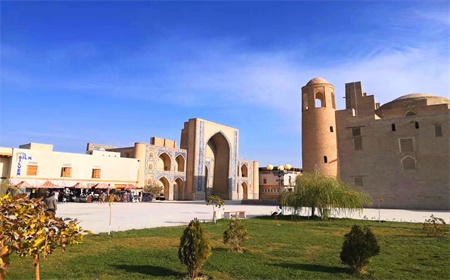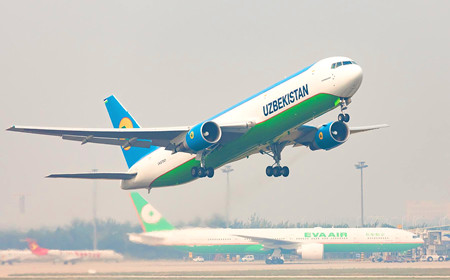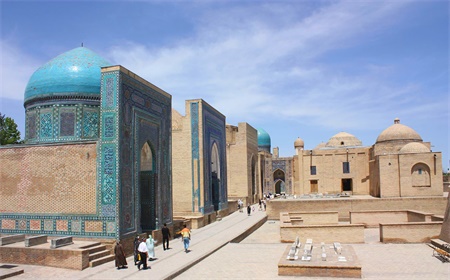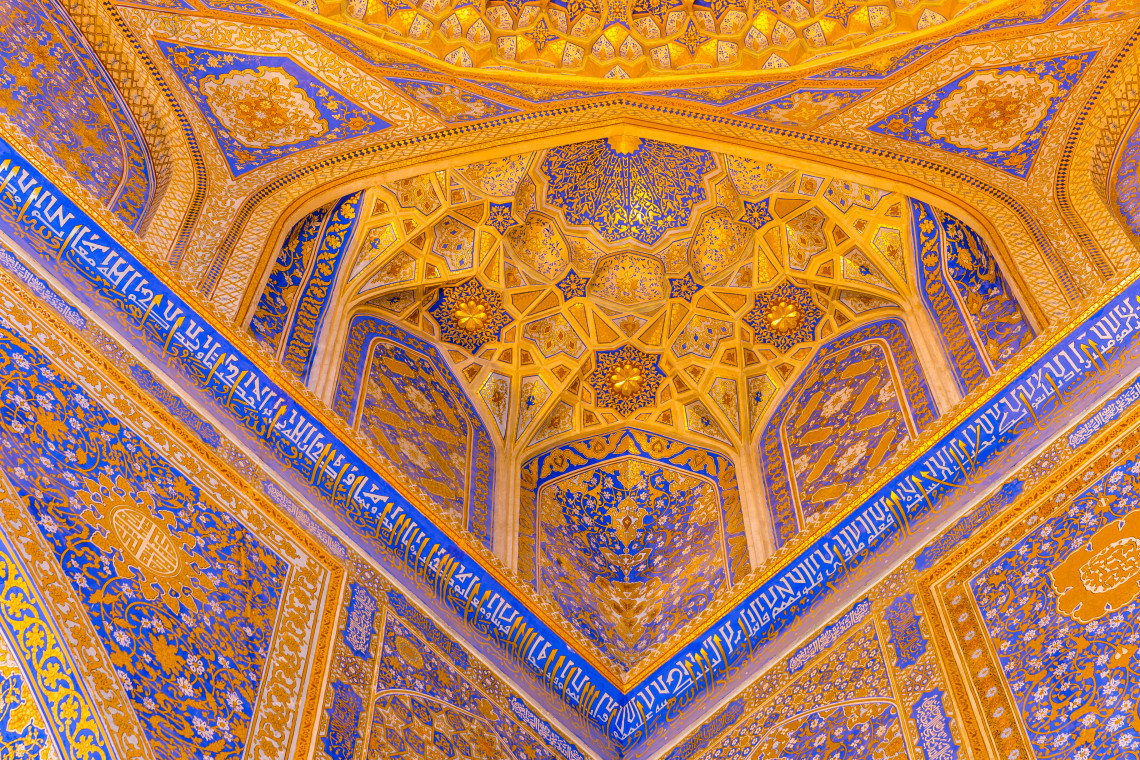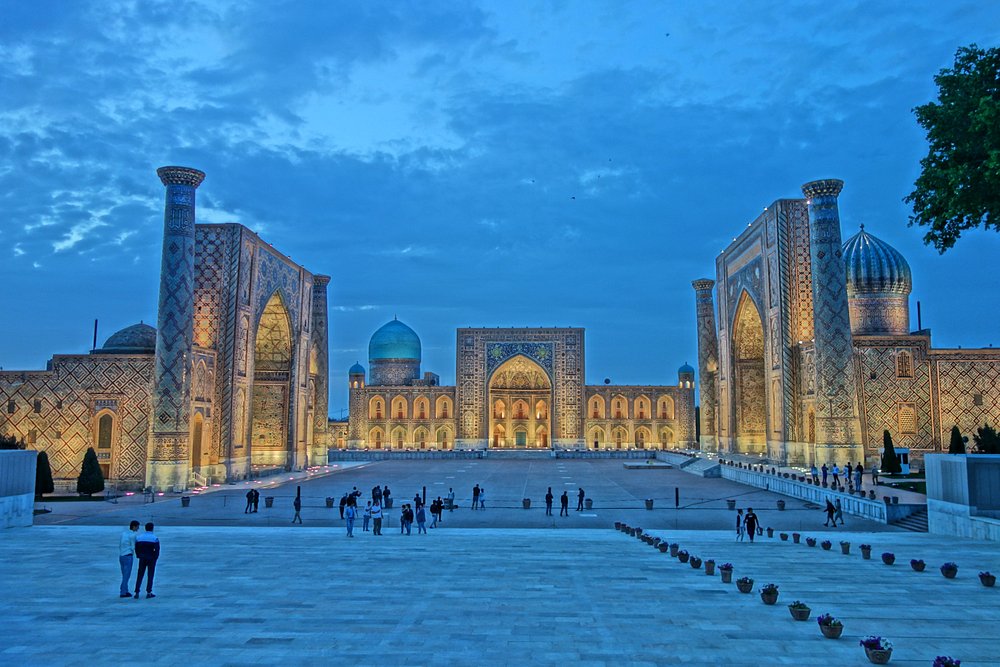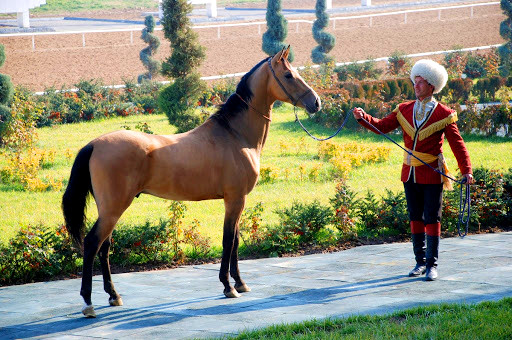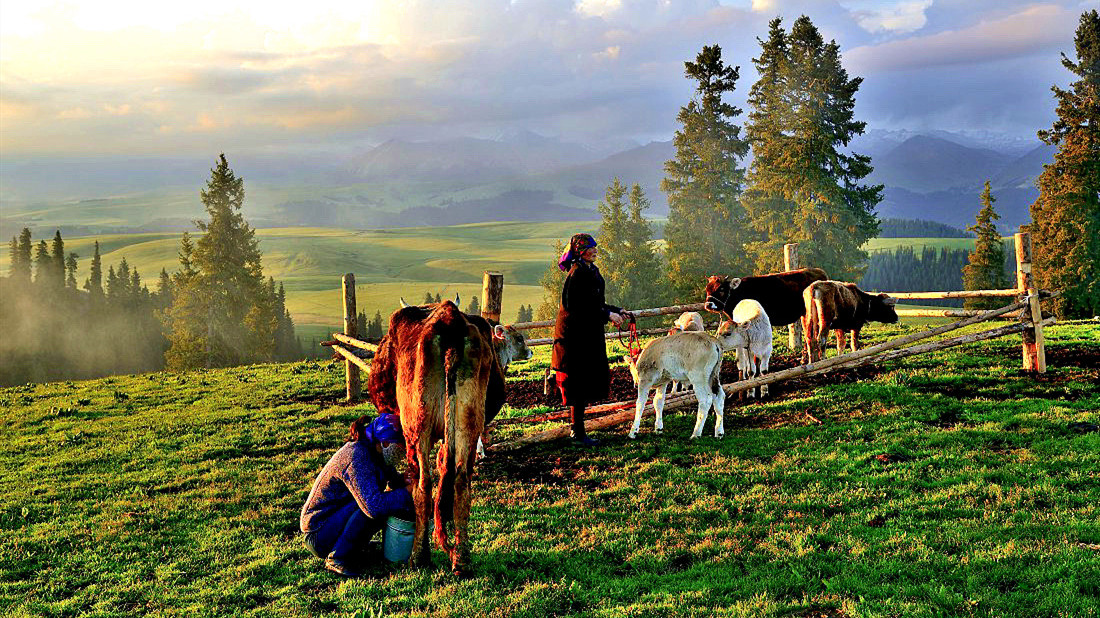Uzbekistan Travel Guide
Nestled at the heart of the legendary Silk Road, Uzbekistan emerges as Central Asia's best-kept land where turquoise-domed mosques pierce desert skies and centuries-old bazaars overflow with spices. Though young as a nation (independent since 1991), this crossroads civilization boasts roots stretching back to Bronze Age settlements that shaped world religions like Zoroastrianism and Buddhism.
Walk in the footsteps of history:
Explore UNESCO-listed cities like Samarkand and Bukhara, where 14th-century Timurid architecture will steal your breath
Wander through living museums of Islamic art, intricate tilework telling tales of empires from Samanids to Khans
Trace caravan routes that connected China to Europe, now lined with welcoming art workshops
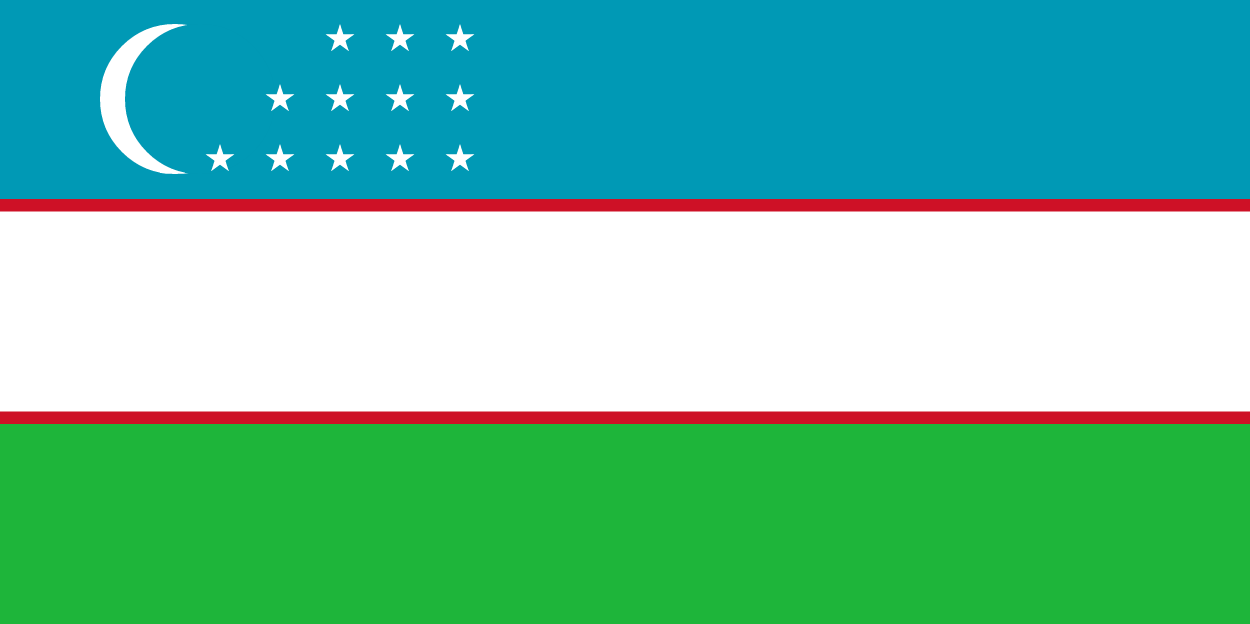
Country Name: Republic of Uzbekistan ( for short Uzbekistan )
Area: 448,900 square kilometers
Population: 37.36 million
Official languages: Uzbeki language (state)
Russian (official)
Capital: Toshkent
The Most Popular Attractions
Many merchandise roads of the Great Silk Road passed through Uzbekistan. Cities grew up upon this road of wealth, and are dotted with magical architecture. Those captivating ancient cities are closely intertwined with the Silk Road's allure and bloodshed. Just in terms of historic tourist attractions, Uzbekistan is the most appealing in Central Asia.
You can endlessly describe the shrines and cultural heritages of Uzbekistan, except those, it is rich in nature. Many tourists pass through the hot Kyzylkum desert and then go to the picturesque Ferghana Valley or the Chimgan Mountains. There are all conditions for recreation.
Uzbekistan does not skimp on sights at all and will give inexpressible impressions to anyone who wants to see its charm. Here's some photos and brief introduction of interesting and beautiful places. Read more about Uzbekistan attraction
Gur-Emir (Mausoleum of Timur)

Gur-Emir was built by the order of Muhammad Sultan at the beginning of the 15th century. Under the dome lined with blue mosaics lies the Timur, the founder of Timurid Dynast. the founder of Timurid Dynasty, he went on military campaigns everywhere and established a great empire that extended from northern India in the east, Asia Minor in the west, with the Arabian Sea and the Persian Gulf in the south border, and reached as far as the Caspian Sea and the Aral Sea in the north. Regarding his character and deeds, scholars have carried out extensive discussions. Some compare him with Attila, Genghis Khan, and Napoleon, claiming that he created a "glorious era unprecedented in the history of Central Asia". Uzbekistan honors him as a national hero. Read more
Ark Citadel
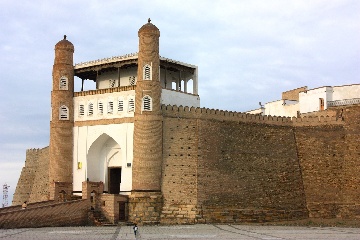
The construction layout shows that the Ark is a closed polygonal structure built from west to east. The surviving castle walls are about 16 - 20 meters high and about 789 meters long.
The steep slopes of the ancient Ark were surrounded by huge accumulations of clay; later they were replaced by adobe bricks. The foundations and towers of the castle were built with fired bricks. Throughout its long history, the Ark has experienced multiple constructions and destructions, and has been in ruins for many years. The castle was rebuilt under the rule of the local ruler Bukharkhudat in the 7th century. Read more
The Kalyan Minaret
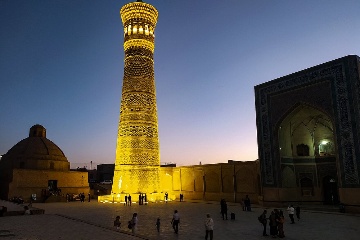
The Kalyan Minaret is the most famous architectural monument in Bukhara. It was completed in 1127, stands 46.5 meters tall, and is located next to the Great Mosque in the heart of the old district of Bukhara. It towers over the entire city of Bukhara, and its entrance can be seen from several kilometers away from Bukhara. It towers over the entire city of Bukhara, and its entrance can be seen from several kilometers away from Bukhara. There are many well - structured buildings around the minaret. The Great Mosque was built in the 16th century, and opposite the mosque is a madrasa called Mir - i - Arab. The minaret was originally used to call everyone to prayer loudly. Read more
The ship cemetery

The Aral Sea Ship Cemetery, located near Moynaq in northwestern Uzbekistan, stands as a haunting testament to one of the worst environmental disasters of the 20th century. Once a bustling fishing port, Moynaq thrived on the shores of the Aral Sea, which was the fourth-largest lake in the world and a vital economic resource for the region. However, the sea has shrunk dramatically since the 1960s, leaving behind a desolate landscape dotted with the rusted remains of abandoned ships. Read More
Shah-i-Zinda
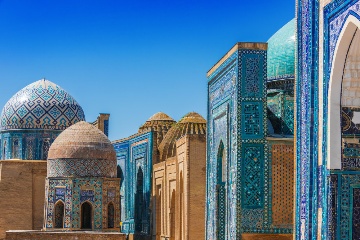
Shah-i-Zinda, nestled in the heart of Samarkand, Uzbekistan, is a renowned architectural and cultural complex. The name "Shah-i-Zinda" translates to "Living King," it can be traced back to the 11th century when the first tomb was constructed over the supposed resting place of Kusam ibn Abbas. Over the centuries, the complex expanded significantly, with various rulers and dynasties adding their own mausoleums and religious structures. Notably, during the 14th and 15th centuries, the Turco-Mongol emperor Timur and his descendants, including Ulugbek, contributed to the growth of Shah-i-Zinda, turning it into a revered site. Read More
Juma Mosque
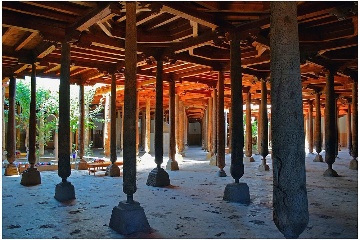
The unique Juma Mosque dates back to the 10th century, although it has been rebuilt and restored at various times, including a major restoration in the 1788. The standout features of the mosque are the flat roof supported by 212 wooden (elm) columns arranged in 17 rows, the innovative use of natural light, and the 42-meter minaret standing alongside. Most of the wooden columns are not original, but several were salvaged and repurposed in the various renovations over the years. An interesting method is used to protect the wooden columns from rot by placing them on a stone base with the small supporting wooden end surrounded with camel wool to draw off moisture from the wood. Read More
Khudayar Khan Palace
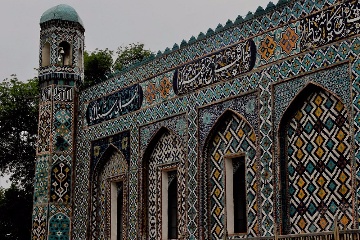
The Khan's Palace, with 7 courtyards and 114 rooms, was built in 1873. Its dazzling tilework makes it look almost new, blending seamlessly with the modern park around it. Just three years after its construction, Tsarist forces arrived, destroyed the palace's fortifications, and deposed the Khan.
In the Khan's Palace in Kokand, Uzbekistan, around half of the space was once for female use. Russian forces destroyed this part in 1919. Khudayar Khan, the last Kokand Khanate ruler, had 43 concubines there waiting to be selected for his bedchamber. As Islam permits only four wives, this debauchery ruler kept a mullah to quickly perform marriage ceremonies valid for just one night. Read More
Uzbekistan State Museum of Applied Art
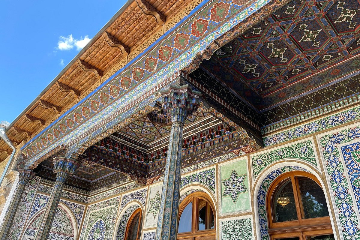
The Uzbekistan State Museum of Applied Art, located in the heart of Tashkent, is a cultural treasure house that showcases the rich artistic heritage of Uzbekistan. Founded in 1937, it traces its origins to a 1927 exhibition that featured the best works of Uzbek craftsmen. Housed in the former residence of Russian diplomat, the museum is a stunning example of late 19th-century Uzbek architecture, adorned with intricate carvings and traditional decorations.The museum's collection of over 7,000 artifacts spans from the early 19th century to the present day. Read More
Muhammad Amin-khan Madrasah
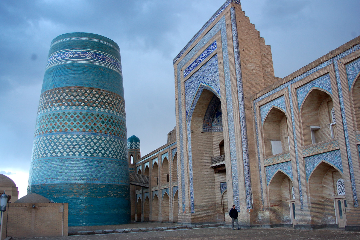
The Madrasah of Muhammad Amin-khan, in Itchan-Kala, is Khiva's most notable landmark and Central Asia's largest madrasah. This two - story building, ordered by Khiva's ruler Muhammad Amin-khan between 1851 and 1854, spans 72 by 60 meters and has 125 khudjras (cells) for 260 students. Each khudjra has two rooms, and those on the second floor include a loggia facing the facade. The madrasah's five domes and flanking towers stand out. Its facade is decorated with glazed bricks, and the wooden doors have detailed carvings. The majolica facing, with herbal patterns, is impressive. An Arabic inscription above the entrance reads, "This wonderful building will stay here forever to descendants' joy."Read More
Registan
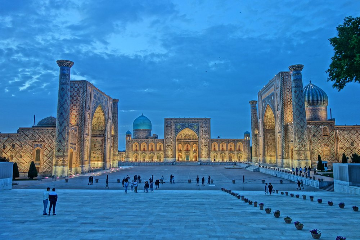
Registan became the central square of Samarkand in the 14th century. The word "Registan" can be translated as "a sandy place." Earlier there flowed a canal forming sand and silt deposits. The sacred Mausoleum of Imam Muhammad ibn Djafar (9th - 10th century) was built here in the time of Samanids, which explains the choice of the place. Six streets crossed at Registan. In the time of Timur, Registan was connected with the citadel of Samarkand by"Silver rows" street. A dome shopping mall tim Tilpak-Furushon was built at the crossroad, on behalf of Timur's wife Tuman-aga. Under Mirzo Ulugbek, Registan became the main official city square where military parades were held and the ruler's decrees announced. Ulugbek constructed a majestic madrasah and Sufi khanaka with a huge dome. By the 17th century the old buildings of Registan were collapsing and the governor of Samarkand, Yalang-tush-by, built Sher-Dor madrasah instead of Ulugbek's khanaka and later the Tillya-Kari Madrasah. Read More
Sitorai-Mohi-Hosa
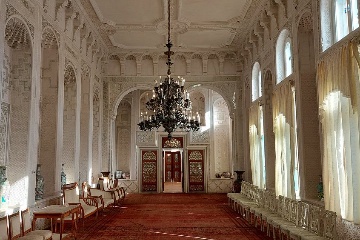
The palace Sitorai-Mohi-Hosa "Elegant Star of the Moon" was the country residence of the Bukhara amirs. It is situated 4 km north of Bukhara in the area of a drained swamp. Parts of the palace buildings existed there under Amirs Nasrullah and Muzaffar. But large-scale construction in Sitorai-Moh-Hosa was started only in the time of Amir Abd al-Ahad died in 1910) The palace complex had been built for two decades by the end of the century. The old palace was constructed under Amir Abd al-Ahad-khan. He sent Bukhara masters to Petersburg and Yalta to study Russian architecture. Using Russian experience, local architects headed by usto Khadja Hafiz built a splendid building that combined local Bukhara and European traditions. The palace throne-yard played a major role. During the Amir's reception ceremonies the court elite stood under its arches. Some of the buildings of the palace were designed by an engineer, Ignatiy Sakovich. Read More
Chor Minor Madrasah
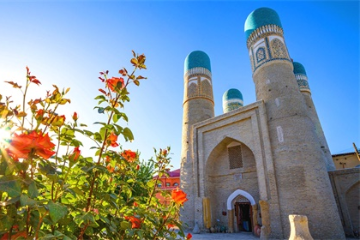
Chor Minor Madrasah, located in the historic city of Bukhara, Uzbekistan, is one of the most unique and beautiful architectural monuments in Central Asia. This historic gatehouse for a now-destroyed madrasa is renowned for its distinctive design and rich cultural significance. Chor Minor Madrasah is situated in the northeast of Bukhara, near the Labi-Hauz complex. Its name, "Chor Minor," which means "four minarets" in Persian, is derived from the four small minarets that adorn the corners of the square-rectangular building. Read More
Desert Kyzylkum
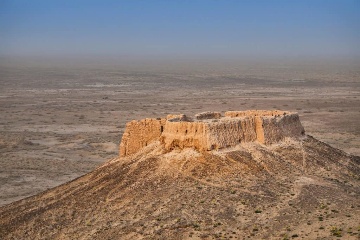
The Kyzylkum Desert, also known as the “Red Sand” desert, is one of the largest deserts in Central Asia, covering an area of approximately 300,000 square kilometers. It spans across parts of Uzbekistan, Kazakhstan, and Turkmenistan, lying between the Syr Darya and Amu Darya rivers.
Despite its arid and harsh conditions, the Kyzylkum Desert is home to a surprisingly diverse range of flora and fauna. The landscape consists of vast sand dunes, some reaching up to 75 meters in height, as well as isolated mountain ranges and enclosed basins. The desert receives very little rainfall, averaging between 100 and 200 millimeters annually, mostly in winter and spring.
Chimgan Mountains
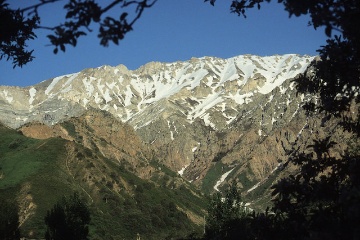
The mountain range is relatively low, the average height of the mountains is 1500 meters, but it is considered one of the best places for winter holidays in Asia. There are many routes for skiers and hikers in the mountains. There are also conditions for mountain climbing. In summer, the meadows are amazingly beautiful, on which flowers grow. People come here not only on vacation, but also on weekends and holidays, and a large number of tourist centers and hotels operating here make it possible to find a suitable accommodation and overnight stays.
Experiences not to be missed in Uzbekistan:
Uzbekistan is a most attractive country for travellers who come to Central Asia for the first time.
If you would like to admire the historical architecture, go to the Samarkand, Bukhara, Khiva or Uzbekistan Attraction.
Travel in Uzbekistan:
Transportation:
Uzbekistan is the only two landlocked countries in the world, it used to be the part of the ancient Silk Road, the international route through which traders of silk and other precious goods travelled between Asia and Europe. Uzbekistan Transportation
Local Food
Uzbek cuisine is influenced by local agriculture, as in most nations. There is a great deal of grain farming in Uzbekistan, as well bread and noodles are their staple food. Uzbek cuisine has been characterised as "noodle-rich". Mutton is a popular variety of meat due to the abundance of sheep in the country and it is part of various Uzbek dishes.
Pay Attention
When you Plan to your holidays destination you should be careful and pay attention to avoid unnecessary tactics when you travel to Uzbekistan. Here we prepare Uzbekistan Travel Tips for you.
Uzbekistan Music:
The music of Uzbekistan has reflected the diverse influences that have shaped the country. It is very similar to the music of the Middle East and is characterized by complicated rhythms and metres. Because of the long history of music in the country and a large number of different music styles and musical instruments, Uzbekistan is often regarded as one of the most musically diverse countries in Central Asia.
Best Time to Visit Uzbekistan:
From April to October is the best time to visit Uzbekistan. Make the most of your trip by checking out upcoming festivals and international exhibitions that are held in Uzbekistan and combine your trip with one of these events.
If you haven't decided when to travel, we recommend visiting Uzbekistan during Navruz, a bright and vibrant holiday in March, or the Silk and Spices Festival, a colourful festival of Uzbek traditions held annually at the end of May in Bukhara. Read More
Recommended Uzbekistan Tours:
20 Days Silk Road to Uzbekistan Kyrgyzstan & China
23 Days Uzbekistan to Pakistan via Karakoram Highway






























